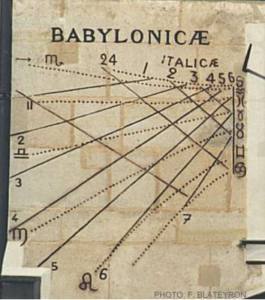

It consists of a tablet on which a diagram appears. The Yale tablet YBC 7289 which we describe is one of a large collection of tablets held in the Yale Babylonian collection of Yale University. Let us say a little about these tablets before describing the mathematics which they contain. The four tablets which interest us here we will call the Yale tablet YBC 7289, Plimpton 322 (shown below ), the Susa tablet, and the Tell Dhibayi tablet. The article Babylonian mathematics gives some background to how the civilisation came about and the mathematical background which they inherited.

Here is a map of the region where the Babylonian civilisation flourished. What times what shall I take in order to get 9 ?Īll the tablets we wish to consider in detail come from roughly the same period, namely that of the Old Babylonian Empire which flourished in Mesopotamia between 1900 BC and 1600 BC. A translation of a Babylonian tablet which is preserved in the British museum goes as follows:-Ĥ is the length and 5 the diagonal. Certainly the Babylonians were familiar with Pythagoras's theorem. They were aware that this was an approximation, and one Old Babylonian mathematical tablet excavated near Susa in 1936 (dated to between the 19th and 17th centuries BC) gives a better approximation of π as 25/8 = 3.125, about 0.5 percent below the exact value.Pythagoras's theorem in Babylonian mathematics In this article we examine four Babylonian tablets which all have some connection with Pythagoras's theorem. They measured the circumference of a circle as three times the diameter and the area as one-twelfth the square of the circumference, which would be correct if π is estimated as 3. 28 (3), p. 202).īabylonians knew the common rules for measuring volumes and areas. Robson, "Neither Sherlock Holmes nor Babylon: a reassessment of Plimpton 322", Historia Math. Most satisfactorily by reciprocal pairs, as first suggested half a century ago, and the second Same answer as the question "what problems does the tablet set?" The first can be answered the question "how was the tablet calculated?" does not have to have the Care must be exercised to see the tablet in terms of methods familiar or accessible to scribes at the time. Much has been written on the subject, including some speculation (perhaps anachronistic) as to whether the tablet could have served as an early trigonometrical table. The triples are too many and too large to have been obtained by brute force. The Babylonian tablet YBC 7289 gives an approximation to 2. The majority of recovered clay tablets date from 1800 to 1600 BC, and cover topics that include fractions, algebra, quadratic and cubic equations and the Pythagorean theorem. Written in Cuneiform script, tablets were inscribed while the clay was moist, and baked hard in an oven or by the heat of the sun. In contrast to the scarcity of sources in Egyptian mathematics, knowledge of Babylonian mathematics is derived from some 400 clay tablets unearthed since the 1850s. Babylonian mathematics remained constant, in character and content, for nearly two millennia. With respect to content, there is scarcely any difference between the two groups of texts. With respect to time they fall in two distinct groups: one from the Old Babylonian period (1830–1531 BC), the other mainly Seleucid from the last three or four centuries BC. Babylonian mathematical texts are plentiful and well edited. The tablet also gives an example where one side of the square is 30, and the resulting diagonal is 42 25 35 or 42.4263888.īabylonian mathematics (also known as Assyro-Babylonian mathematics ) are the mathematics developed or practiced by the people of Mesopotamia, from the days of the early Sumerians to the centuries following the fall of Babylon in 539 BC. The diagonal displays an approximation of the square root of 2 in four sexagesimal figures, 1 24 51 10, which is good to about six decimal digits.ġ + 24/60 + 51/60 2 + 10/60 3 = 1.41421296.

Babylonian clay tablet YBC 7289 with annotations.


 0 kommentar(er)
0 kommentar(er)
